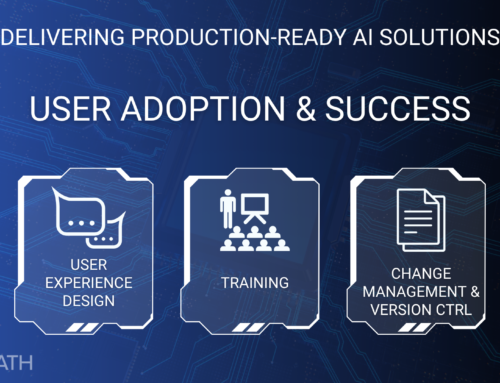A key step in productionizing and operationalize machine learning (ML) models is model monitoring. This is especially important for enterprise where model drift or data drift could have detrimental affects on customer satisfaction, revenue, employee productivity, and other key factors.
Seldon, Fiddler, and Arize AI are platforms that provide machine learning (ML) model monitoring for enterprises, but they offer different approaches, strengths, and features tailored to different needs. Here's a comparison:
1. Seldon
- Core Focus: Open-source model serving, deployment, and monitoring.
- Monitoring Capabilities:
- Metrics: Monitors key operational metrics like latency, throughput, and system resource usage.
- Drift Detection: Provides model and data drift detection, allowing monitoring of prediction accuracy and data distribution changes over time.
- Explainability: Integrates with Alibi for model interpretability and explainability, offering explanations at both the individual and global model levels.
- Integration: Native Kubernetes integration, making it ideal for enterprises already invested in Kubernetes for scaling models.
- Customization: Highly customizable, since it's open-source. Enterprises can modify and extend it as needed.
- Deployment Focus: Kubernetes-native, designed to serve models in production and integrate with other open-source tools (e.g., Prometheus, Grafana).
- Use Cases: Best for enterprises with a strong DevOps and MLOps culture that want full control over infrastructure. Ideal for those that need Kubernetes-based scaling and open-source flexibility.
- Strengths:
- Open-source and Kubernetes-native.
- Highly customizable with community support.
- Good deployment pipeline integration.
- Limitations:
- Lacks the advanced built-in analytics and insights that some enterprise solutions provide.
- Requires Kubernetes and DevOps expertise to manage effectively.
2. Fiddler
- Core Focus: Explainability, fairness, and monitoring of ML models.
- Monitoring Capabilities:
- Metrics: Tracks detailed model performance metrics such as accuracy, precision, recall, F1 score, and AUC over time. Allows performance monitoring across different data segments (slices).
- Drift Detection: Provides strong capabilities for monitoring both data drift and concept drift. It ensures that any shift in the underlying data distribution or model behavior is detected.
- Explainability: A standout feature of Fiddler is its strong emphasis on explainability, providing both global and local explanations of model predictions. This is crucial for regulated industries needing transparency (e.g., finance, healthcare).
- Bias Detection: Offers tools to detect and mitigate bias in model predictions, making it well-suited for use cases where fairness is a concern.
- Integration: Integrates with popular cloud environments and model-serving infrastructures. Offers APIs to integrate into custom workflows.
- Customization: It's more of a turnkey solution than Seldon, meaning less flexibility in customization, but offers strong built-in features for monitoring and analytics.
- Use Cases: Well-suited for enterprises needing high model transparency, explainability, and fairness monitoring. Especially useful in industries with regulatory scrutiny.
- Strengths:
- Industry-leading explainability and fairness tools.
- Built-in support for both data and model performance monitoring.
- Simple integration into cloud infrastructures.
- Limitations:
- Less customizable than open-source solutions.
- Can be over-engineered if explainability or bias detection is not a primary concern for the enterprise.
3. Arize AI
- Core Focus: Monitoring and troubleshooting models in production.
- Monitoring Capabilities:
- Metrics: Tracks real-time model performance metrics, including accuracy, drift, and feature importance.
- Drift Detection: Offers advanced data and model drift detection capabilities, allowing users to detect and address drifts in model predictions and feature distributions.
- Explainability: Provides strong explainability features, allowing users to understand why models are making specific predictions. This includes feature importance and counterfactuals.
- Bias Detection: Similar to Fiddler, Arize AI provides tools to monitor model fairness and detect bias in model outputs.
- Troubleshooting: Arize is particularly strong in troubleshooting models. It helps users debug models in production by identifying which features or segments of data are causing issues or drift.
- Integration: Arize offers easy integration with cloud platforms and model-serving infrastructure, allowing for smooth onboarding and scaling.
- Customization: While focused on out-of-the-box ease of use, Arize allows some customization in terms of how models are monitored and troubleshooted.
- Use Cases: Ideal for enterprises looking to manage large-scale model deployments with an emphasis on monitoring, debugging, and ensuring fairness.
- Strengths:
- Strong focus on model troubleshooting and debugging.
- Comprehensive drift detection and explainability features.
- Good for managing model fairness and bias.
- Limitations:
- Less customizable compared to open-source tools like Seldon.
- May be more focused on monitoring and debugging rather than deployment or end-to-end MLOps.
Key Comparisons:
| Feature | Seldon | Fiddler | Arize AI |
|---|---|---|---|
| Core Focus | Open-source, model serving, MLOps | Explainability, fairness, drift | Monitoring, debugging, drift, fairness |
| Explainability | Integrates with Alibi | Advanced explainability and bias tools | Feature importance, counterfactuals |
| Bias Detection | No built-in support | Strong, built-in bias detection | Built-in fairness and bias detection |
| Drift Detection | Yes | Yes | Yes |
| Troubleshooting | Limited | Moderate | Strong focus on model debugging |
| Customization | High (open-source) | Low to medium | Medium |
| Deployment | Kubernetes-native, highly scalable | Cloud-native, easy to deploy | Easy integration with cloud platforms |
| Target Audience | Enterprises with Kubernetes expertise | Regulated industries needing explainability | Enterprises managing large-scale models |
Key Features:
These tools are widely used in enterprises to monitor machine learning models, but they target different aspects of monitoring and management. Let's compare them based on key features relevant to enterprises.
1. Core Focus and Approach
- Seldon:
- Primarily an open-source model deployment and orchestration platform focused on Kubernetes environments.
- It emphasizes scalable model deployment and monitoring, allowing enterprises to deploy and monitor multiple models at once.
- Model monitoring focuses on inference metrics, data drift, and outlier detection.
- Fiddler:
- Focuses on model explainability and AI monitoring, particularly designed for enterprises that require model transparency and bias detection.
- It's specialized in industries like finance and healthcare where fairness, bias, and trust are important.
- Provides insights into model decisions and performance for both data scientists and business users.
- Arize AI:
- A tool built specifically for ML model monitoring, offering real-time model performance tracking, data drift detection, and outlier detection.
- Targets post-deployment monitoring with strong capabilities for model diagnostics, making it easy to identify data drift, concept drift, and performance degradation.
- It integrates well with various model types and frameworks, ensuring scalability and ease of use for large enterprises.
2. Model Monitoring Capabilities
- Seldon:
- Focuses on infrastructure-level monitoring (latency, throughput) and model health metrics (e.g., drift and outlier detection).
- Supports custom metrics for advanced users but requires more setup to achieve sophisticated monitoring.
- Strong in canary deployments and shadow mode testing for tracking models before full production release.
- Fiddler:
- Offers deep monitoring of model drift, fairness metrics, and performance degradation.
- Specializes in explainability and bias detection, providing stakeholders the ability to understand how and why models make decisions.
- Continuous monitoring for fairness and trustworthiness, allowing for ongoing model evaluations post-deployment.
- Arize AI:
- Built for real-time monitoring, offering continuous performance tracking, data drift detection, and outlier analysis.
- Provides tools for detecting and responding to model degradation before it impacts business outcomes.
- Arize excels in creating visual dashboards that highlight key metrics and trends over time, making it easier to pinpoint problems at a glance.
3. Scalability and Integration
- Seldon:
- Ideal for enterprises with Kubernetes-based infrastructure.
- Integrates well with tools like Kubeflow, Prometheus, and Grafana.
- Supports multi-framework models, such as TensorFlow, PyTorch, and Scikit-learn, making it highly scalable across different environments.
- Fiddler:
- Easy to integrate with existing enterprise models and tools, with API-driven connections to popular platforms like AWS, Google Cloud, and Azure.
- Focuses more on explainability and transparency, and thus scales well for enterprises needing to track model bias and performance across a large user base.
- Can handle multiple models across different business units but may need custom integrations for unique infrastructure setups.
- Arize AI:
- Designed to be highly scalable, supporting large-scale deployment with real-time monitoring for multiple models.
- Integrates with cloud platforms like AWS, Google Cloud, and Azure, and works well with major ML frameworks.
- Easy to scale with minimal setup, especially for enterprises handling a wide range of production models.
4. Explainability and Compliance
- Seldon:
- Provides basic explainability features through integrations, such as Alibi for model explainability.
- Not as robust as Fiddler in terms of bias detection or compliance features, but adequate for companies focused more on deployment and performance monitoring.
- Fiddler:
- Excels in explainability, offering deep insights into model behavior, bias, and fairness.
- Provides tools to meet compliance and regulatory requirements (e.g., in finance or healthcare), making it ideal for highly regulated industries.
- Also supports auditability, allowing enterprises to maintain records of model decisions and performance.
- Arize AI:
- Provides solid post-deployment explainability with tools for performance diagnostics and data drift detection.
- Not as focused on fairness and bias as Fiddler, but it does provide transparency around model performance and diagnostics for troubleshooting.
- Helps ensure compliance with real-time alerts on model deviations, but not as tailored for strict regulatory environments as Fiddler.
5. Ease of Use and Adoption
- Seldon:
- Requires some expertise in Kubernetes and cloud-native architecture, making it slightly more complex for teams without DevOps experience.
- Once set up, it's powerful for handling large-scale deployments and monitoring, but its learning curve can be steep for non-technical users.
- Fiddler:
- Very user-friendly for business users and data scientists alike, with a focus on delivering insights that are accessible to non-technical stakeholders.
- Designed to facilitate collaboration across teams, especially those concerned with trust and fairness in AI systems.
- Arize AI:
- One of the more intuitive platforms for model monitoring, offering easy setup and powerful visualization tools.
- Built to help data scientists and engineers diagnose issues quickly and efficiently without needing deep integration work.
- Provides simple dashboards that can be adopted across teams, making it easy for businesses to monitor models at scale.
Conclusion:
- Seldon: Best for enterprises focused on scalable model deployment and infrastructure-level monitoring in Kubernetes environments.
- Fiddler: Ideal for enterprises needing model explainability, bias detection, and compliance with regulatory requirements. It's particularly well-suited for industries like finance and healthcare.
- Arize AI: Excels in real-time performance monitoring and data drift detection, making it a strong choice for enterprises looking for quick insights into model performance without heavy setup or DevOps expertise.
Each tool has its own strengths, with Seldon being infrastructure-focused, Fiddler excelling in explainability and fairness, and Arize AI providing comprehensive real-time monitoring with minimal setup effort.
For a complete Enterprise-ready Machine Learning Operations (eMLOps) solutions, it's also important to take into account the other systems, processes, skills, and goals before choosing or integrating a model monitoring product. This is one of the many reasons that CtiPath believes that a layered solution is best for productionizing and operationalizing machine learning in the enterprise.





